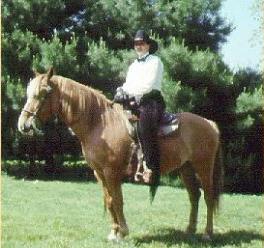|
Home Horse Breeds | First Posted June 24, 2009 May 13, 2020 | |
Cayuse Indian Pony - A Gaited Pony
Overview One little known horse from the "Old West" period of American history is the Cayuse Indian Pony of the Northwest. Although the settlers called most horses raised by the American Indians "Cayuse Ponies," the Cayuse Indian Pony of the Northwest is a distinct breed which originated in the 1800s. Its conformation and its background set it apart from the Mustang, Spanish Barb and other wild horses. Physical Description Small and stocky, the Cayuse Indian Pony has high withers and an unusually long canon bone. In addition, its distinctly sloped pastern gives it a broken walking gait. Any rider, especially younger children, will find this an extremely pleasant and easy seat. Origin The breed's history is obscure and difficult to trace. It has been generally accepted that the Cayuse Indian Pony descended from the French-Norman horses imported into Canada in the 1600s. Most of these French horses were Percherons, which the Canadians used to improve their domestic breeds. The Percheron was a good choice, it continues to be one of the only work horses which can easily trot for extended periods of time. Years later, the French Canadians brought their horses into what is now American territory. It was recorded that they bartered their horses in St. Louis with the Pawnee Indians, who then took them further west. Eventually, the Indians crossed their sturdy French horses with the lighter Spanish Barbs to produce a horse which had not only speed, but endurance. By the 1800s, the Cayuse Indian Pony had become a separate breed. The Cayuse Indians, known throughout the Northwest for their expert horsemanship, continued to develop this French-Spanish Barb strain through selective breeding. Because the French horse had the ability to pass on its tendency for spots or a profusion of white markings, the Cayuse Indians were able to produce some very colorful horses. In fact, the Appaloosa, Paint and Pinto breeds have all been influenced by the blood of the Cayuse Indian Pony. Interesting Facts Frederic Remington, who is famous for his artistic representations of the Old West, sketched many of the wild horses he found in the late 1800s. He described the Cayuse Indian Pony as "generally roan in color, with always a tendency this way, no matter how slight." Remington wrote that his subject was heavily muscled, and while only about fourteen hands high, was still very powerful. Influences 1. Percheron 2. Spanish Barbs For More Information:
American Indian Horse
Sources: |